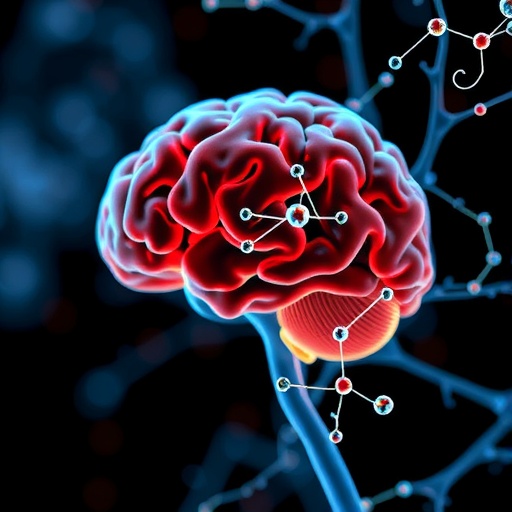In an illuminating new study published in BMC Psychiatry, researchers have uncovered a compelling biochemical marker that could revolutionize the diagnosis and understanding of two major psychiatric disorders: schizophrenia and bipolar disorder. The focus of this groundbreaking research is unconjugated bilirubin, a molecule traditionally associated with liver function, but now emerging as a potential key player in neuropsychiatric health.
For decades, distinguishing between schizophrenia and bipolar disorder during acute psychiatric episodes has posed a significant clinical challenge. Both conditions exhibit overlapping symptoms such as mood disturbances, psychosis, and cognitive impairment, leading to potential misdiagnosis and inappropriate treatment strategies. The current diagnostic criteria rely heavily on behavioral assessments, which can be subjective and insufficient. This has fueled intense scientific exploration into objective biomarkers that might differentiate these disorders more reliably.
Enter unconjugated bilirubin—a product of heme catabolism primarily processed by the liver. Historically, its clinical relevance has been confined to jaundice and neonatal hyperbilirubinemia. However, mounting evidence hints at its wider physiological and pathological roles, including neurotoxicity and inflammation. The new study conducted by Liu et al. systematically examines whether blood levels of unconjugated bilirubin can serve as a discriminative biomarker between schizophrenia and bipolar disorder.
The research employed a multifaceted methodological approach. Firstly, they measured and compared the blood concentrations of unconjugated bilirubin in cohorts of patients diagnosed with schizophrenia or bipolar disorder during acute phases. In addition to biochemical assays, the team utilized advanced genetic epidemiology techniques, specifically Mendelian randomization, to dissect potential causal links rather than mere associations.
Remarkably, the findings demonstrate that patients with schizophrenia exhibited significantly higher levels of unconjugated bilirubin (averaging 11.53 μmol/L) compared to those with bipolar disorder (averaging 9.06 μmol/L), with robust statistical significance (p=0.0001). This quantitative difference may reflect underlying pathophysiological distinctions that have remained elusive until now. The elevated bilirubin might be indicative of oxidative stress or impaired detoxification pathways specifically contributing to schizophrenia.
To move beyond correlation, the team employed Mendelian randomization—a technique that leverages genetic variants as natural experiments to infer causality. The analysis yielded an odds ratio of 1.131 with a 95% confidence interval ranging from 1.034 to 1.237 (p=0.007), providing compelling evidence that unconjugated bilirubin is not merely an epiphenomenon but may indeed play a contributory role in schizophrenia’s pathogenesis. This genetic approach strengthens the case for targeting bilirubin pathways as potential therapeutic or diagnostic avenues.
Furthermore, the study explored the dynamic changes in unconjugated bilirubin levels in response to modified electroconvulsive therapy (MECT), an established treatment modality for severe psychiatric disorders. Patients with schizophrenia undergoing MECT showed significant clinical improvement accompanied by a pronounced decrease in unconjugated bilirubin concentrations. This temporal relationship underscores a plausible mechanistic intersection between clinical interventions, symptom alleviation, and bilirubin modulation.
The implications of these insights are vast. Clinicians may soon have access to a straightforward blood test that aids in distinguishing schizophrenia from bipolar disorder during acute episodes, thereby refining treatment pathways and improving patient outcomes. Moreover, understanding bilirubin’s role could unravel new biological targets for drug development, particularly for schizophrenia, which has historically been refractory to many interventions.
Scientifically, the connection between unconjugated bilirubin and neuropsychiatric disorders invites a reevaluation of bilirubin’s function beyond its classical biochemical scope. As a molecule capable of crossing the blood-brain barrier, it might contribute to neuroinflammation, oxidative damage, or neurotransmitter dysregulation—processes implicated in schizophrenia’s etiology. Future research will need to elucidate the cellular and molecular mechanisms underpinning these observations.
Additionally, these findings challenge the traditional dichotomy between psychiatric and metabolic disorders, suggesting interdependent physiological systems could underlie mental health conditions. The integration of liver metabolism and brain pathology signifies a holistic perspective on mental illness that could pave the way for multidisciplinary therapeutics.
It is noteworthy that this study achieved statistical rigor through comprehensive patient sampling and advanced genetic tools, enhancing the reliability and replicability of results. The use of MECT as a functional validation step adds a translational dimension, connecting experimental evidence with real-world clinical outcomes.
While this investigation opens exciting avenues, several questions remain. The precise source of elevated unconjugated bilirubin in schizophrenia—whether due to increased heme turnover, impaired conjugation, or altered clearance—must be dissected. Also, whether bilirubin acts as a mediator of neural dysfunction or a byproduct of other pathological processes requires clarification.
Nevertheless, the prospect of integrating bilirubin metrics into psychiatric diagnostics holds promise to address a critical unmet need. This biomarker may facilitate early identification, optimize personalized treatment, and reduce the burden of misdiagnosis that currently hampers effective mental healthcare.
The study by Liu and colleagues represents a paradigm shift, positioning unconjugated bilirubin as a potent biochemical beacon illuminating the complex landscape of severe mental disorders. As the scientific community digests these revelations, one certainty emerges: psychiatric research is on the cusp of a new biochemical era that marries genetics, metabolism, and neuropsychiatry in unprecedented ways.
As ongoing and future studies expand on these findings, clinicians and researchers alike will be watching closely. The intersection of liver metabolism and psychiatric disease exemplifies the intricate interconnectivity of human physiology and beckons a future where mental illnesses are demystified through molecular insight.
Subject of Research: The potential role of unconjugated bilirubin as a diagnostic biomarker and its causal relationship with schizophrenia and bipolar disorder.
Article Title: The diagnostic potential of unconjugated bilirubin in schizophrenia and bipolar disorder
Article References:
Liu, HH., Wei, SM., Chen, BB. et al. The diagnostic potential of unconjugated bilirubin in schizophrenia and bipolar disorder. BMC Psychiatry 25, 710 (2025). https://doi.org/10.1186/s12888-025-07143-1
Image Credits: AI Generated




